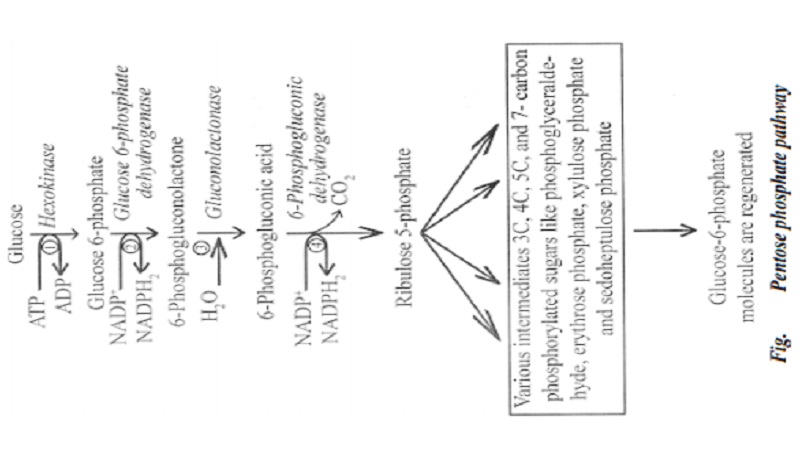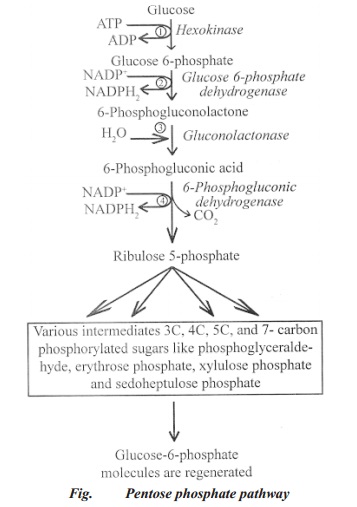Chapter: 11 th 12th std standard Bio Botany plant tree Biology Higher secondary school College Notes
Plant Respiration : Pentose phosphate pathway

Pentose phosphate pathway
Generally, majority of living organisms obtain energy for various biochemical activities from glucose. In aerobic organisms, it is degraded in three major phases namely, glycolysis, Krebs cycle and electron transport system. In anaerobes, glucose is partially degraded by glycolysis and fermentation. In 1938, Dickens discovered an alternate pathway for the utilization of glucose by the living cells. This pathway is called pentose phosphate pathway or hexose monophosphate pathway or direct oxidation pathway. This pathway consists of major phases - oxidative and nonoxidative phases. Pentose phosphate pathway takes place in the cytoplasm only.
Oxidative phase
In this phase, glucose is oxidized and decarboxylated with the formation of pentose through phosphogluconic acid as shown in the flow chart. The essential feature of this phase is the production of NADPH2.
1. Glucose is phosphorylated to glucose-6-phosphate by hexokinase.
2. The glucose-6-phosphate is oxidized to 6-phospho-gluconolactonate in the presence of NADP+ by enzyme glucose-6-phosphate dehydrogenase. NADP+ is reduced to NADPH2.
3. The 6-phosphogluconolactone is hydrolysed by gluconolactonase to form 6-phosphogluconic acid.
4. The 6-phosphogluconic acid undergoes oxidative decarboxylation again in the presence of NADP+ to form Ru5P. This reaction is catalyzed by 6-phosphogluconic dehydrogenase. NADP+ is reduced to NADPH2. In this reaction CO2 is released.
Nonoxidative phase
In this phase, various intermediates such as 3C, 4C, 5C and 7-carbon phosphorylated sugars are produced. They are phosphoglyceraldehyde (3C), erythrose phosphate (4C), xylulose phosphate (5C) and sedoheptulose phosphate (7C).
To summarize, six molecules of glucophosphate enter this pathway. After oxidation, six molecules of CO2 are released as shown in the step 4 and twelve molecules of NADPH2 are produced as shown in the steps 2 and 4. In other words, after oxidation one molecule of glucose produces six molecules of CO2 and twelve molecules of NADPH2. Out of six glucose molecules one is completely oxidized and other five molecules are involved in the formation of 3C, 4C, 5C, and 7- carbon sugar intermediates. From these intermediates, five molecules of glucose-6-phosphate are regenerated.

Significance of pentose phosphate pathway
1. It provides alternative route for carbohydrate breakdown.
2. It generates NADPH2 molecules which are used as reductants in biosynthetic processes. Production of NADPH2 is not linked to ATP generation in pentose phosphate pathway.
3. It provides ribose sugar for the synthesis of nucleic acids.
4. It provides erythrose phosphate required for the synthesis of aromatic compounds.
5. It plays an important role in fixation of CO2 in photosynthesis through Ru5P.
Related Topics